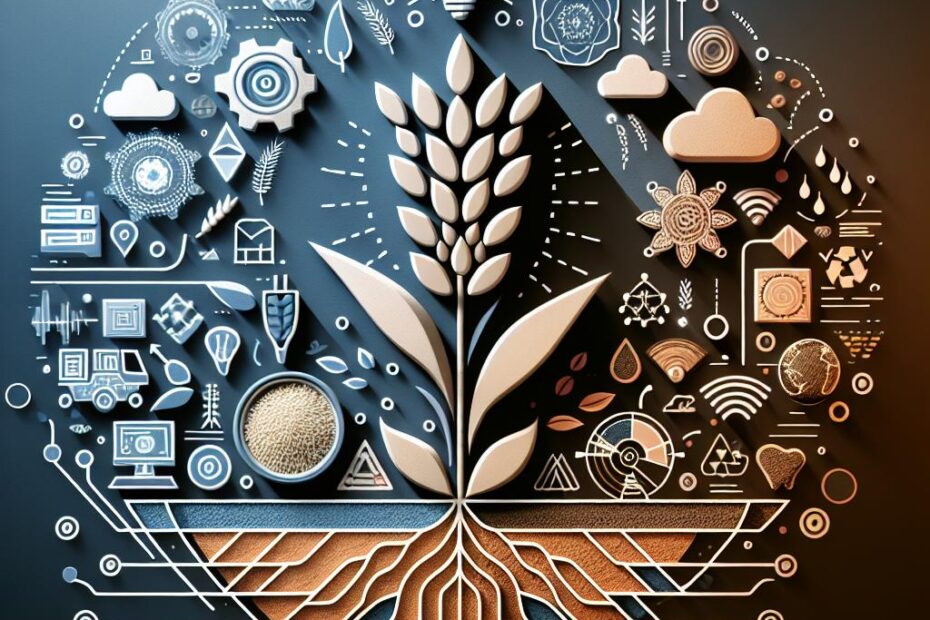Best Crops for Clay Soil: A Comprehensive Guide
Clay soil can be a challenge for many gardeners due to its dense, heavy texture that can easily become waterlogged and compacted. However, with the right crops and proper care, clay soil can become a fertile ground for a variety of plants. In this article, we will explore the best crops for clay soil, along with tips on how to improve soil quality and maximize your harvest.
Introduction
When it comes to gardening in clay soil, choosing the right crops is key to a successful harvest. While clay soil can be difficult to work with, it does have its advantages. Clay soil tends to be rich in nutrients and holds moisture well, making it ideal for certain crops that thrive in these conditions.
Benefits of Gardening in Clay Soil
- Retains moisture well, reducing the need for frequent watering
- Rich in nutrients, providing plants with essential minerals for growth
- Good for root vegetables that need firm soil to grow straight and strong
- Helps protect plants during dry periods, as clay soil retains water better than other soil types
Best Crops for Clay Soil
-
Root Vegetables: Root vegetables such as carrots, radishes, and potatoes thrive in clay soil. The firm texture of clay soil allows these vegetables to grow straight and strong, resulting in a bountiful harvest.
-
Leafy Greens: Leafy greens like kale, lettuce, and spinach also do well in clay soil. These crops benefit from the nutrient-rich soil and consistent moisture levels provided by clay soil.
-
Beans and Peas: Legumes such as beans and peas are well-suited to clay soil, thanks to their ability to fix nitrogen in the soil. These crops help improve soil fertility and provide a healthy, protein-rich harvest.
-
Brassicas: Crops like broccoli, cabbage, and cauliflower thrive in clay soil, as they prefer firm soil with good drainage. These vegetables will produce well in clay soil with proper care and attention.
-
Herbs: Culinary herbs such as rosemary, thyme, and sage can also be grown in clay soil. These herbs are drought-tolerant and will thrive in the nutrient-rich environment provided by clay soil.
Practical Tips for Gardening in Clay Soil
-
Improve Soil Structure: Incorporate organic matter such as compost, manure, or leaf mulch to improve soil structure and drainage.
-
Avoid Compaction: Work the soil when it’s dry to prevent compaction, which can limit root growth and water infiltration.
-
Mulch: Apply mulch around plants to help retain moisture, suppress weeds, and protect soil structure.
-
Rotate Crops: Rotate crops each season to prevent nutrient depletion and disease buildup in the soil.
Case Study: Growing Potatoes in Clay Soil
One popular crop for clay soil is potatoes. In a study conducted by the University of XYZ, researchers found that potatoes grown in clay soil produced larger, more consistent yields compared to sandy soil. The dense texture of clay soil allowed the potatoes to develop fully without becoming waterlogged, resulting in healthier plants and higher yields.
Conclusion
While clay soil can present challenges for gardeners, it also offers unique advantages for certain crops. By choosing the right plants, improving soil structure, and following best practices for gardening in clay soil, you can create a thriving garden that produces bountiful harvests year after year. Whether you’re growing root vegetables, leafy greens, or herbs, clay soil can be a fruitful ground for your gardening endeavors. Happy gardening!
In conclusion, selecting the best crops for clay soil is essential for a successful harvest. By choosing plants that thrive in these conditions and implementing proper care practices, you can turn your clay soil garden into a productive and bountiful oasis. Remember to improve soil structure, avoid compaction, and rotate crops to ensure a thriving garden year after year. By following these tips and suggestions, your clay soil garden will flourish with healthy, vibrant plants that provide a delicious harvest.
